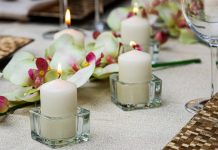LEDs, or light-emitting diodes, are the most advanced and efficient lighting technology currently available. Excellent LED bulbs outlast incandescent and halogen alternatives and produce equal or higher quality light.
In terms of energy savings, light-emitting diodes (LEDs) are at the forefront of lighting innovation and might dramatically alter the way people use light in the future. LEDs in homes can live up to 25 times longer than incandescent bulbs while using 75% less energy.
Many countries stand to benefit significantly from the widespread adoption of LED lighting due to its ability to reduce energy consumption. Energy savings from LED lighting could surpass 569 TWh annually by 2035, which is equivalent to the annual energy production of more than 92 1,000 MW power plants. This is because, by 2035, LEDs are expected to be used in the vast majority of new lighting installations.
What Makes LED Flood Lights Unique
Energy savings LEDs aren’t like incandescent or compact fluorescent bulbs in any way. Important distinctions include:
- LEDs, or light-emitting diodes, are tiny—about the size of a peppercorn—and they produce light in a wide spectrum of colors. Sometimes white light is created by combining the outputs of red, green, and blue LEDs.
- Forget about using reflectors and diffusers to trap light. LEDs radiate it in one exact direction. Because of this quality, LEDs are more cost-effective in many applications, including recessed downlights and task lighting. When using conventional lighting, more than half of the light may never exit the fixture and must be reflected in order to illuminate the target area.
- LED lights produce almost no heat. Comparatively, incandescent lights emit 90% of their energy as heat, whereas CFLs emit roughly 80% of their energy as heat.
- LED lights have a substantially longer lifetime than traditional bulbs. An LED bulb can last three to five times as long as a CFL and thirty times as long as an incandescent.
Why are LED Flood Lights Popular?
One of the main reasons why many prefer LED floodlights is because of their energy-saving properties. Energy savings of up to 75% are possible when using LEDs instead of incandescent bulbs, and the light output of 85W floodlights is roughly comparable to that of 500W incandescent bulbs. But this is not the only reason, other benefits of using LED flood lights include:
- They are less expensive but can illuminate a wider range.
- LED flood lights are significantly safer than conventional HID bulbs (metal halide, HPS, etc.) because they don’t contain mercury or lead during production.
- The visible light component of the radiated light is greater than 80%, producing a pleasing visual appearance.
- The LED flood light’s sleek and understated design makes it ideal for use in any setting.
So, if you are looking for reliable, safe, efficient, attractive, and energy-saving features with the right color temperature outdoor flood lights, consider buying LED flood lights. These LED floodlights have the potential to change the future of outdoor lighting.









